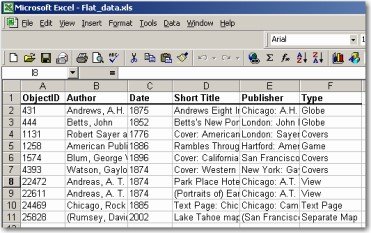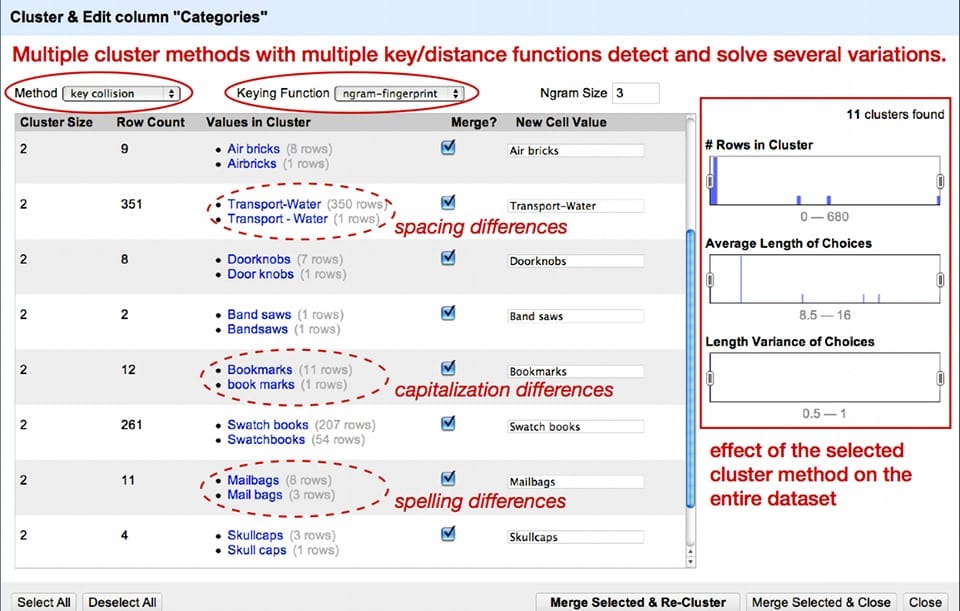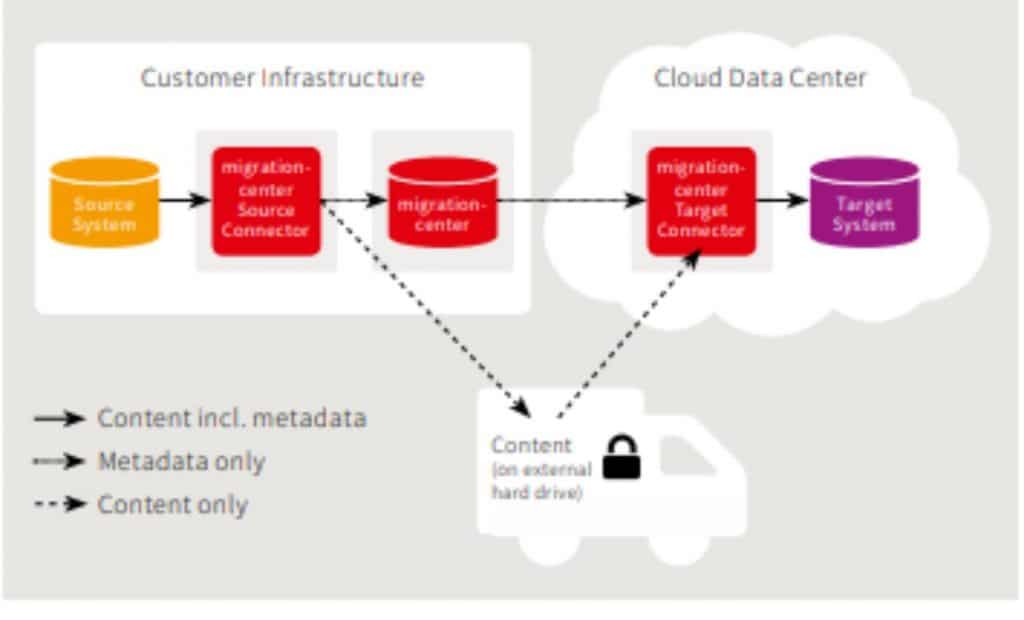Content Migration Doesn’t Have to be a Nightmare: Best Practices for a Smoother Transition
May 22, 2018
For most people, the thought of migrating thousands of pages to a new website is overwhelming.
Even if the project involves only a website redesign, it can feel like an impossible task.
While content migration could never be labeled as “easy,” it is entirely doable if you start with a defined goal and think of it as a series of strategic steps instead of looking at it as a whole. Tweet this
The task is made more difficult for large organizations that have multiple departments, each having ownership in the content. For example, a large university or corporation may have 20 departments that have uploaded content to the website over the years, and all 20 of them need to be involved in the process.
Unless you create a communication and implementation plan before beginning, the process can quickly spin out of control.
If you’ve been tasked with this daunting project, read on as we discuss the best practices for conducting large content migrations.

But First, Some Useful Definitions
Before we begin talking about the steps involved in a successful content migration, let’s define some terms that will help you better understand the process.
Content Inventory
This is the first step in a content migration and it involves taking a comprehensive inventory of all the content listed on the website. Content can include articles, blogs, videos, audio, offline presentations, and more. Depending on your goal, you will need to determine which types of content to inventory.Content Audit
Once your content inventory is complete, you should conduct a content audit. In this part of the process, you will import or transfer the data you collected onto a spreadsheet and categorize it. This data includes things like the URL, bounce rate, usability, word count, number of social shares, conversion data, and page visits. The type of data you collect will depend on your goal.Content Analysis
Now that you’ve taken a complete inventory of your content and organized the data on a spreadsheet, you’ll use that data to conduct an analysis of the current content and determine which content needs to be updated or removed. In addition, you’ll uncover content gaps that will help you determine what new content needs to be added.
The Project Manager's Role
As the project manager (PM), you play an essential role in the success of the migration.
And in order to ensure that success, you have to take the lead and implement certain policies and procedures to be followed by all stakeholders in the process.
Your first step in organizing your team is to identify all content owners
Over the years, various departments have added content to the website, and each of these “owners” will need to play a role in determining whether the existing content is deleted, updated, or moved exactly as is.
Once you pinpoint the participating business units, you’ll need to identify key team members from each department who will take the lead role in the process.
Next, you'll need to set up a communication system to ensure that everyone involved stays in the loop
No key member can be isolated in this process because success comes from working as a coordinated team.
Implement a communications system that works best for your company. Depending on your organization, you could use Skype, in-person meetings, team lunches, an internal newsletter, memos, email, video simulcasts, or any other number of methods.
Use this free communication plan template from BrightHub.
As the project manager, you’ll need to establish a set of rules and standards across all departments
For example, if you assign a rating system for old content to determine whether or not it will be migrated to the new website or CMS, all team members will need to work from that system.
By creating these standards, it will make it easy for team members to understand their role—and for you to track their progress.
Next, set up the team members for success
Content migration is a difficult process, and team members may feel overwhelmed if they’re simply assigned the task as a whole.
Set them up for success by assigning each team member roles, individual tasks, milestones, and a timeline for all the work. This will give them a roadmap and help them understand your expectations.
But remember, assigning them unrealistic timelines will only hurt the process.
Be meticulous in your assumptions, even if you have to go through the process yourself to understand how long a process takes. For instance, if you assign team members the job of updating old content, do it yourself or assign it to someone else and log the amount of time it takes and then use that as the basis for your timelines.
Finally, track the progress of all team members and address any issues that arise
Staying on task is important to the overall success of the project, and the best way to do that is to track the progress of each team member.
This will allow you add more members if one is lagging behind, or identify areas where you may need to pivot.
It’s important to remember that you need more than IT people to conduct a successful content migration. Don’t forget to involve members of the content team because, more than anyone, they know what content exists, what content is duplicated, which articles are similar but necessary, and what type of content needs to be added.
For example, the authors who write content for a specific department or the editors who create the content plan for it have a deeper understanding of the existing content and why it’s there. Involving them in the content audit would help ensure that the right content gets migrated and nothing important is left behind.
Helpful Tip:
When asked about a tip for working with multiple business units, Andrew Dean, Senior Solution Architect at Open Professional Group had this to say;
“Interestingly, the tip I would offer is not technical. If a PM is working with multiple business units, the organization and communication about the needs and requirements of each business unit are critical early in the process. For example, if a PM is working with many units, the most important question to know, as early as it can be known, is what data MUST be moved and what data is nice to have. It never hurts to also define what data we are leaving behind.”
He says knowing this information helps the project manager organize and coordinate across the units. He also says it’s important for the tech team to focus on developing a migration solution that is based on the answers to these questions instead of trying to determine the business logic as they code.
“All of the business logic details that need to be “coded” should be considered and planned before this is handed off to the developers for action,” he says. “What you don’t want is a developer trying to figure out what a given set of business requirements may be in the middle of the coding process. That leads to mistakes, refactoring and blown budgets and timelines.”
“Above all,” he says, “the migration should ensure that no critical data is left behind. This is where the organization and communication is so critical. A PM can then look across the business units to find overlaps, deltas or alignment to ultimately produce a business level migration plan to be handed to the tech team for implementation.”
Define Your Goal
No two content migrations are the same, and in order to determine how to proceed, you’ll first need to determine your goal for the process. Remember, every step you take from here on out should be based on your goals, so put some thought into this.
Some of the goals that are common in content migration are:
Improve your site's SEO or site traffic
In order to improve the SEO on your site, you’ll need to first determine its current effectiveness.Get the big picture
You may need to understand the scope of your content across all content types to plan for future projects.Eliminate ROT
ROT stands for redundant, outdated, or trivial content, and it should have no place on your website.Evaluate content for consistency and message
In order to maintain a uniform branding experience for site visitors, all your content should be consistent in its message.Identify content gaps
If one target audience has an abundance of content while another has little to no content, you’ll need to identify those gaps and fill them.Analyze the metadata
Look at the metadata across all content to determine whether it’s been used properly and consistently. For example, if you don’t utilize a metadata model consistently across all content, such as a standardized vocabulary for descriptive items, the search and distribution aspects of the site will be affected.

Metadata is used to categorize and organize your content so end users can easily find it. For example, in the above Excel worksheet, the metadata collected for the content is date, short title, publisher, and type.
Organize for findability
If visitors or employees have a difficult time finding the content, it will need to be organized more strategically.
Identify Content Parameters
Once your team is organized and you have a solid goal in mind, you’ll need to identify which types of content to include in your inventory. Content is more than just blog posts and articles. Some of the other content types are videos, audio files, infographics, photos, tables and charts. In short, you’ll need to determine whether to conduct a partial content inventory or a full content inventory. A full inventory is just like it sounds: an inventory of every piece of content on the site.
If you’re doing an inventory for a large corporation or organization, this is probably what you need to do. It will give you a glimpse into how the pages on the site relate to one another and expose any hidden data, which could result in duplicate content or broken links.
On the other hand, a partial inventory gives you information about subsets of the content. For example, you may need to know what content has been added to the site in the past 3 months, or need to analyze only the top levels of the hierarchical structure.
How to Conduct a Content Inventory
In times past, it was necessary to conduct content inventories manually, which could take months to accomplish. Now, automation allows you to do it in seconds. And in addition to the time savings, it helps eliminate human errors and the necessity for coding skills.
But according to expert opinions, whether you should do a manual or automated migration varies depending on whom you ask. For example, Doug Plant, a partner at Mugo Web says, “Very large migrations have to be mechanical, just on the basis of scale. It is too expensive to do it manually, even with something like Mechanical Turk, the migration would cost too much.” (Mechanical Turk is an online marketplace that allows project managers to access global workers at affordable rates.)
Dean’s answer was slightly different. “The overall answer with anything related to content migrations is “it depends.” In the 21 years working in this space, I have never found two migrations that are alike. They all have similarities, but they all have key differences as well.” He explains that the source and target systems are always variable, and more often than not, most content migration is done by machines and automation with manual actions on only selected or necessary elements. He goes on to say that with proper scripting during the automation, the migration is “much easier, faster, and more accurate.”
And Plant agrees. “Even though code is going to be one-time-use, it has to be written with full best practices.” He says this includes complete testing cycles, debugging hooks, good logging, and it has to be properly written and documented.”
As you can imagine, there are a lot of automated programs to choose from. Some of the most popular are:
Content Analysis Tool (CAT). This tool will crawl your website and bring back a full inventory of your content, as well as provide the key data you need

- Screaming Frog. This tool will crawl your entire website and give you instant results. While it’s mainly used for SEO analysis, it is also a website audit tool that gives insight into 30 parameters.
- This migration tool is right for large corporations and other websites with extremely large amounts of data. Many Fortune 500 companies as well as governmental organizations use it to migrate data.
- DeepCrawl. This tool not only does content inventory, but also allows you to see a live comparison of both the old and new site.
The automated tools not only provide you a list of the content on your site, but will also allow you to capture specific data for each piece of content. For example, it will provide you with the URL or path, file type, links, keywords, date of creation, times viewed, last date accessed and more. You will use this data in the next step in the process.
Use the Data to Conduct a Content Audit
Now that you have a list of every piece of content on the website, it’s time to move on the next step in the process: conducting a content audit. You will work from a spreadsheet in this step of the process. The tools listed above will automatically export the data into one with the exception of DeepCrawl. This system will provide you with an extraction report that you will use to create your own spreadsheet. You should organize the spreadsheet in a way that makes it possible to analyze the data in order to determine what to do with it.
But before you begin that, you should first clean up the spreadsheet to make the process easier. You can either use tools like OpenRefine or DataCleaner, or if you’re using Excel, do it yourself with this handy guide.

Once the data is cleaned, it’s time to organize it in order to move on to the next step of analyzing it.
Depending on your goal, you can organize the content into content types, themes, content owner, author, departments, audience, or any other way that makes sense to you. For example, if you organize the content by audience, you should start by creating a column for each type of audience you strive to reach and then place the content into those categories.
Once you complete the audit, you will be able to determine whether the content distribution for each audience is equally divided or if you need to add more content to some categories. You can continue the process and add subcategories to each column. For instance, if you’re categorizing by audience, you can add subcategories like existing and potential customers to gain even more insight. For each piece of content, you should create columns and add, at the minimum, the following data to them:
- Headline
- URL or path
- Content summary
- Intended audience
- Supplements such as audio or visual files
This is a long and tedious process, especially if you have thousands of pages of content to audit, and you should employ your key team members in the various business units to help.
Just be sure to give them clear guidelines and timelines to keep the project on track.
Important Tip:
Some people try to migrate content without first conducting a content inventory and audit, but that can lead to disaster.
Matthew Hesser, CEO of finduslocal.com, an online local business directory that is currently adding millions of pages to the site, weighs in. “Doing a content migration without first doing an inventory and audit is not a wise choice unless your goal is to begin the process from scratch again after it fails.”
It's Time to Analyze the Data
You’ve created a list of the content, organized it into whatever structure is suitable for your goal, and now it’s time to analyze the data.
To rank all that content, you will need a scale to help team members determine the fate of the content. Every piece of content should fall into 1 of these 3 categories:
- Content needs to updated or revised
- Content can be ported over as-is
- Content needs to be deleted
Ideally, the team members for each department will conduct the analysis for their content, but in order to make it successful, you should provide them with example content pieces for each of the 3 categories of existing content.
In addition, supply them with parameters so they’ll understand how to determine where new content is needed.
Because this is a time-consuming process, it’s important to give team members milestones and timelines to keep the process flowing. And when someone fails to meet a deadline, you can step in to determine if they don’t understand the process or if there is another issue that needs to be addressed.
Helpful Tip:
Because not all pages have a URL, or have more than one piece of content, you should assign an index number to every piece of content. And to make things easier, group those index numbers into categories. For example, assign an index number beginning with the number 1 for all documents, number 2 for all videos, and so on. This will make the auditing process easier in 2 ways.
First, if 2 pieces of content from different departments reside on the same page, you can assign each department the index number of their content rather than the URL, which includes another department’s content.
In addition, if some team members are auditing certain types of content such as video, you will know exactly which index numbers to assign them. This will help streamline the process and make the analytics easier.
Migrate Your Content
Now that each department has audited, updated, and added new content to fill in the gaps, it’s time to migrate the content to your new site. This is the scariest part of the process for many people because if it’s done wrong, it can cause big problems. For example, a bad content migration can cause an organization to lose the SEO rankings they’ve worked so hard to achieve, result in a loss of workflow, or the new site could be filled with broken links.
But again, automated software has made the process easier—and safer. Programs like the ones we mentioned above automatically transfer the files from your old website to the new one. In addition, you can migrate your content from an existing CMS to a new one with CMS2CMS, or use Migration Center, an out-of-the-box software program that guarantees large scale migrations with no interruption to workflow.

Helpful Tip:
If new content was added to the site, or old content was revised and updated before the migration, it will automatically migrate along with everything else. But if the content owners didn’t complete the updates or new copy before the migration occurred, you will have to add it to the new site manually. Just be sure to keep all new or updated documents together in a folder so you don’t leave out any important content.
A Word About Testing
According to both Plant and Dean, ongoing testing early is key.
Dean says that his group believes that “strong requirements early on, backed with aggressive multi-round testing ahead of the production release leads to a far less risky production release.” He goes on to say “To that end, we would suggest that the more that can be done to confirm the quality and accuracy of the migration data in the test migrations, before the production release, the better.” He says it’s important to include all stakeholders in the testing because doing so will increase the likelihood of issues being spotted in the staging environment.
Plant also talks about the importance of testing before the migration is complete. “Post migration testing takes a lot of time and effort. Content owners have to sift through a lot of instances of the migrated content looking for problems. This process invariably requires answering questions like “How many pieces of content have this problem?” “What did the original piece of content look like? Was it originally broken or did the migration break it? Do we try to fix it automatically?” This is especially true where there are complex discussions between all the stake holders.”
Dean sums up the process nicely:
There is a lot of application of the old saying “An ounce of prevention is worth a pound of cure” when it comes to data migration. The short version is test early, test often and be sure that all stakeholders have a role in the process including the go/no go decision for production release. If this process is utilized, the post migration testing should be more topical and more of a “confirmation” that the data that was seen in the testing phases has successfully reached production. Of course, each migration plan has its own unique nuances, but if proper testing ahead of production release is performed, post-production release testing should be considerably smaller in terms of effort.
-Andrew Dean































